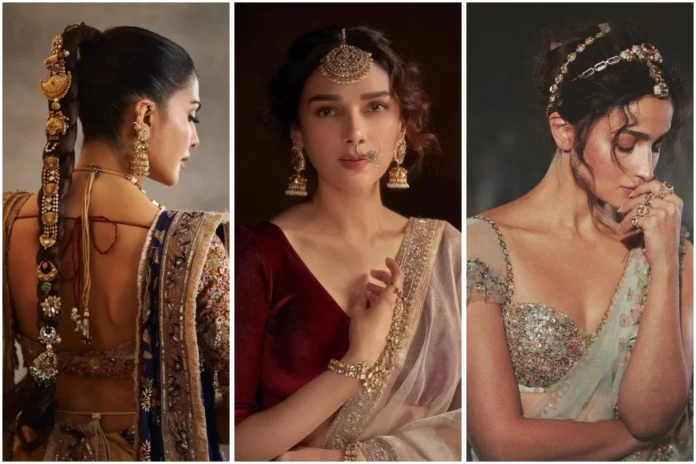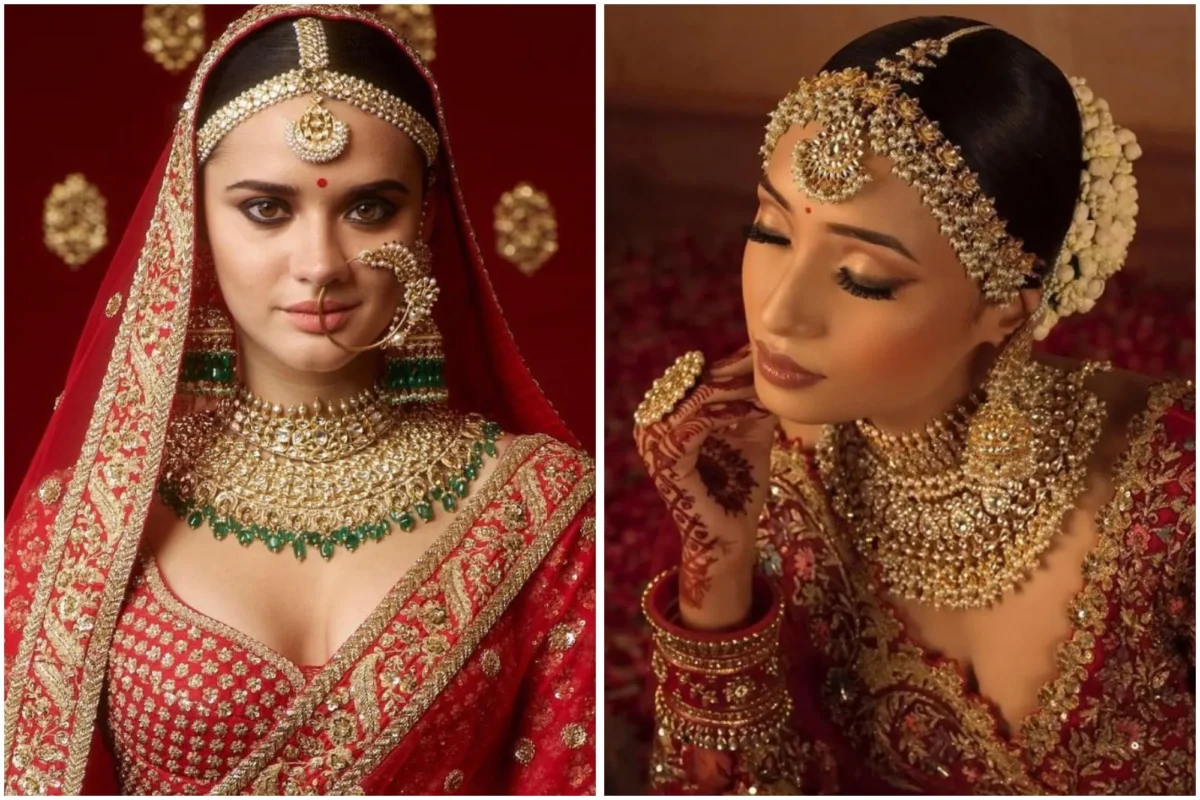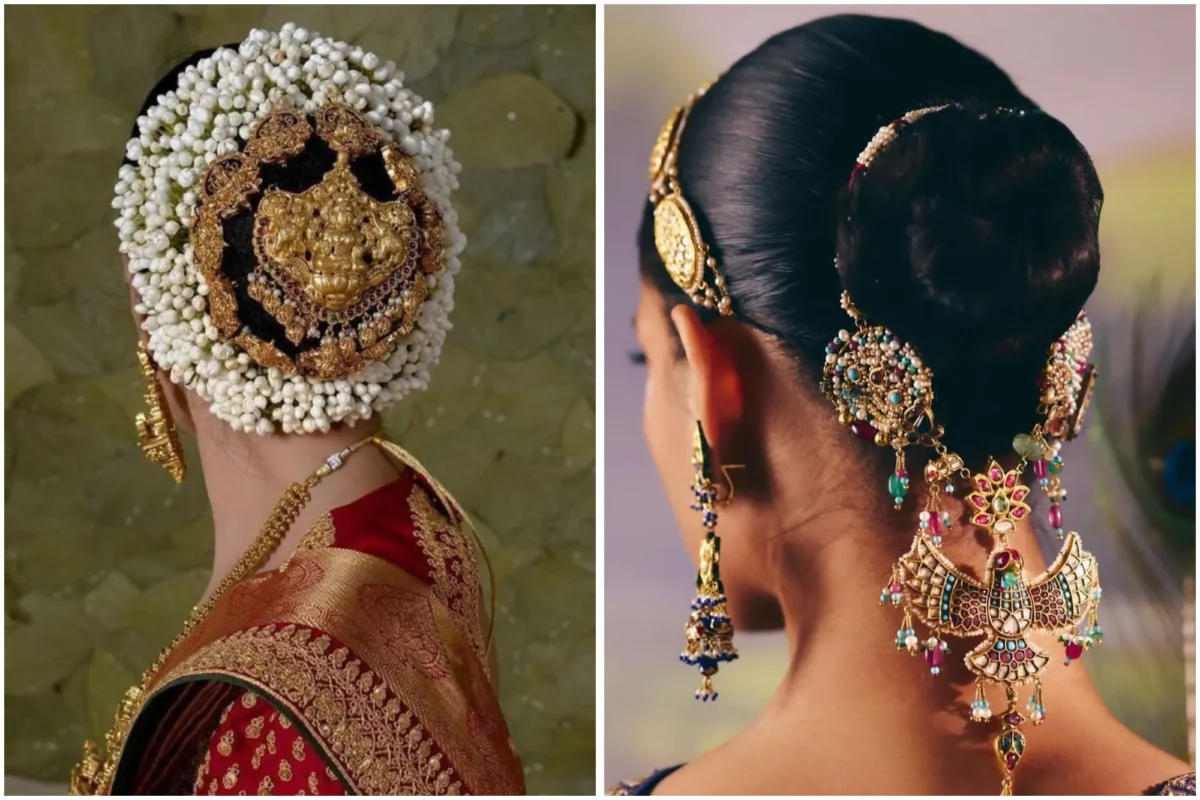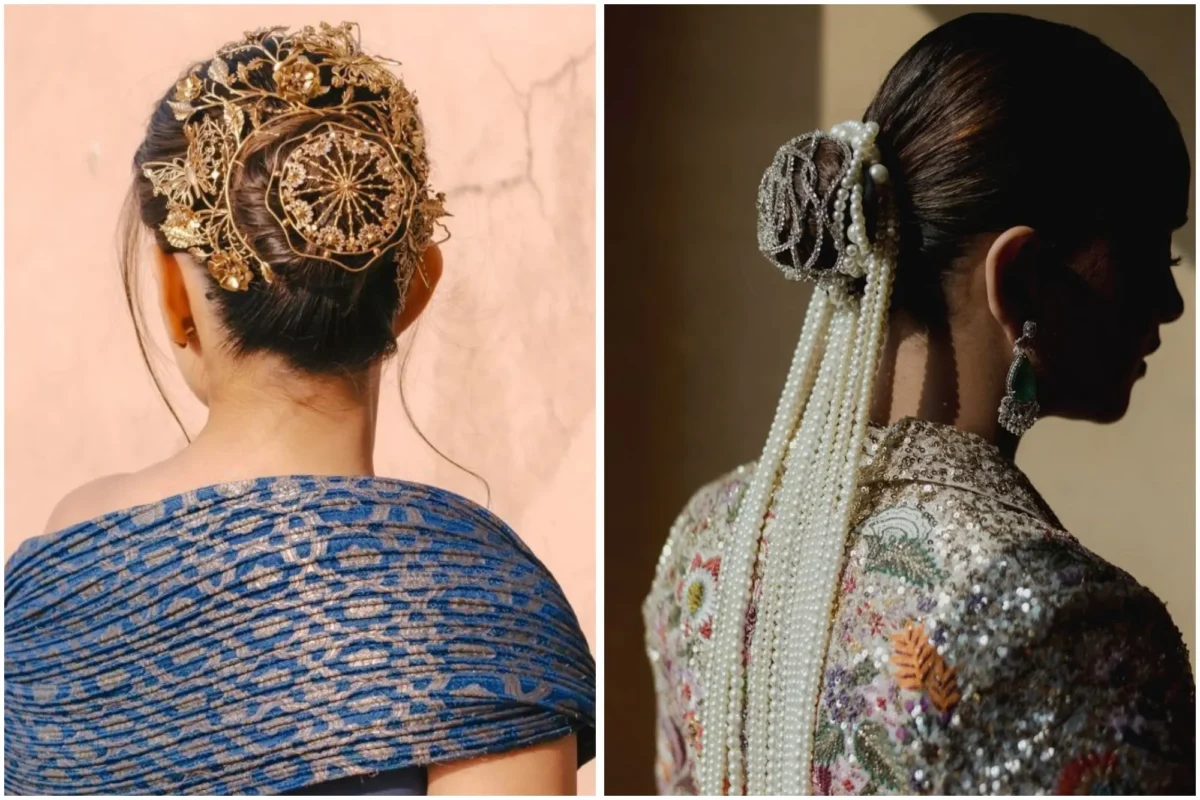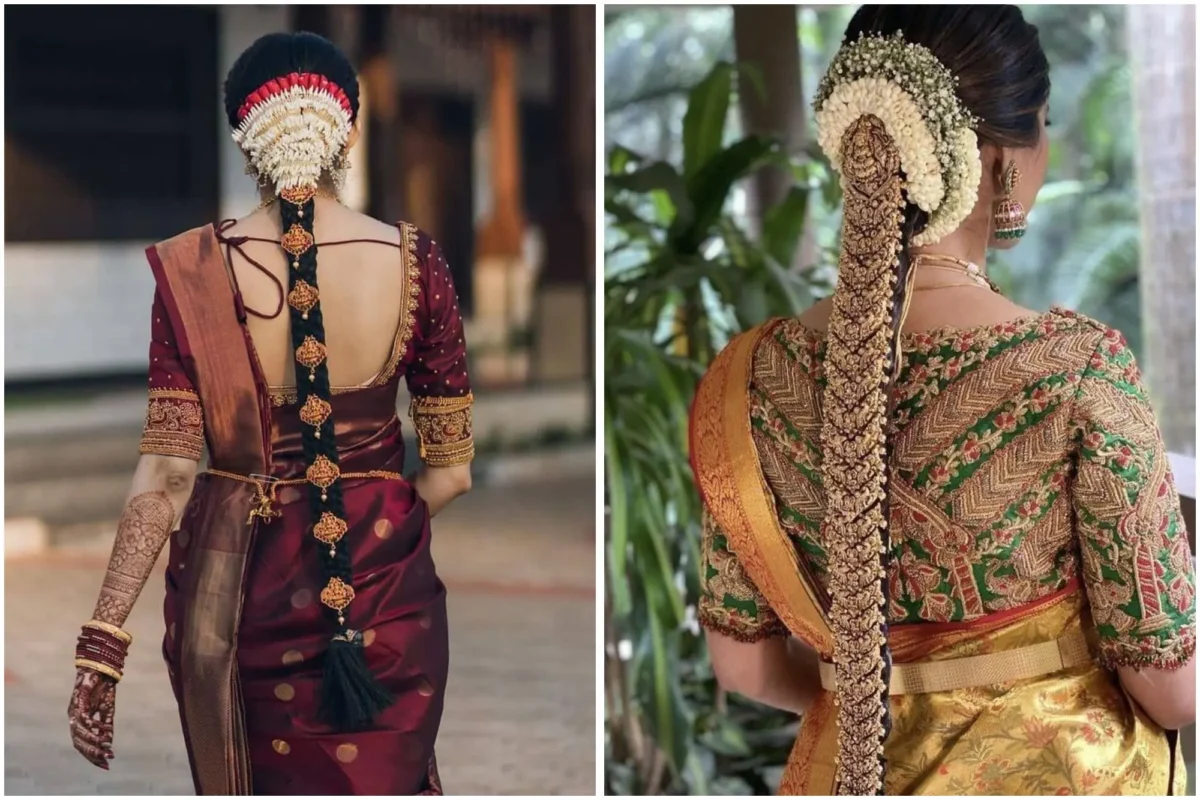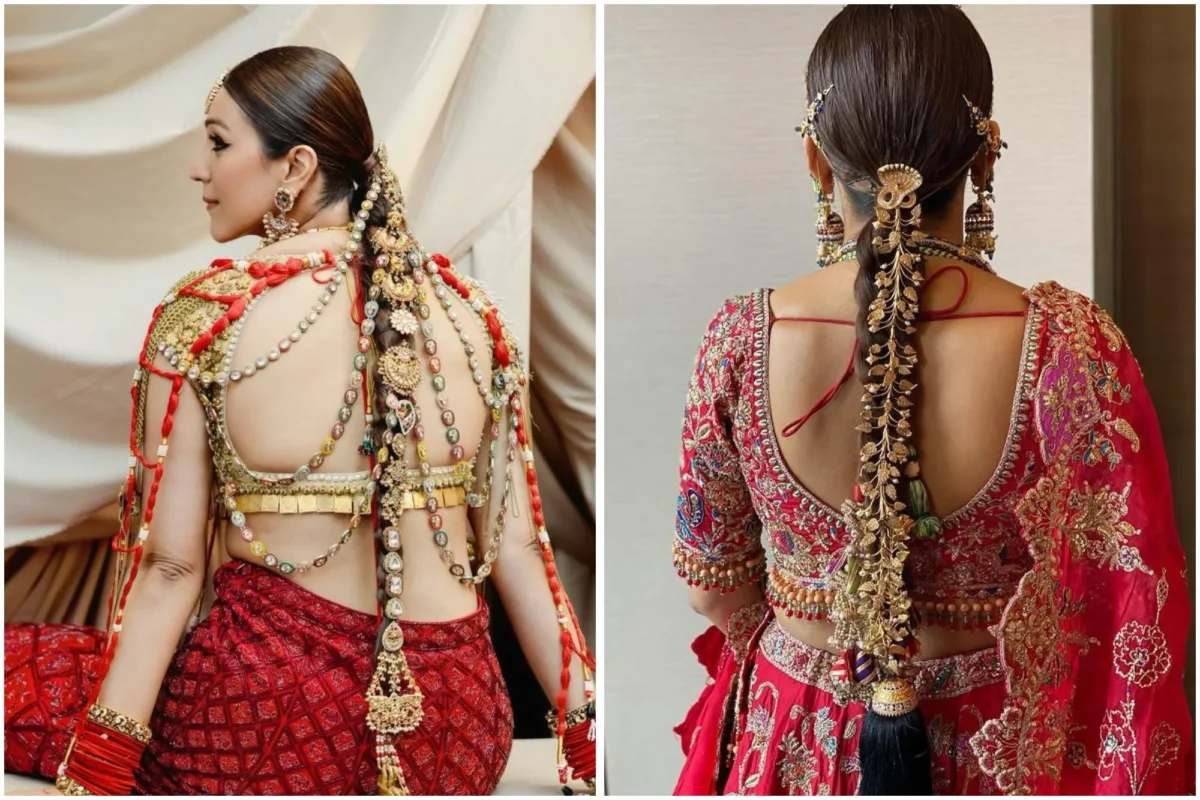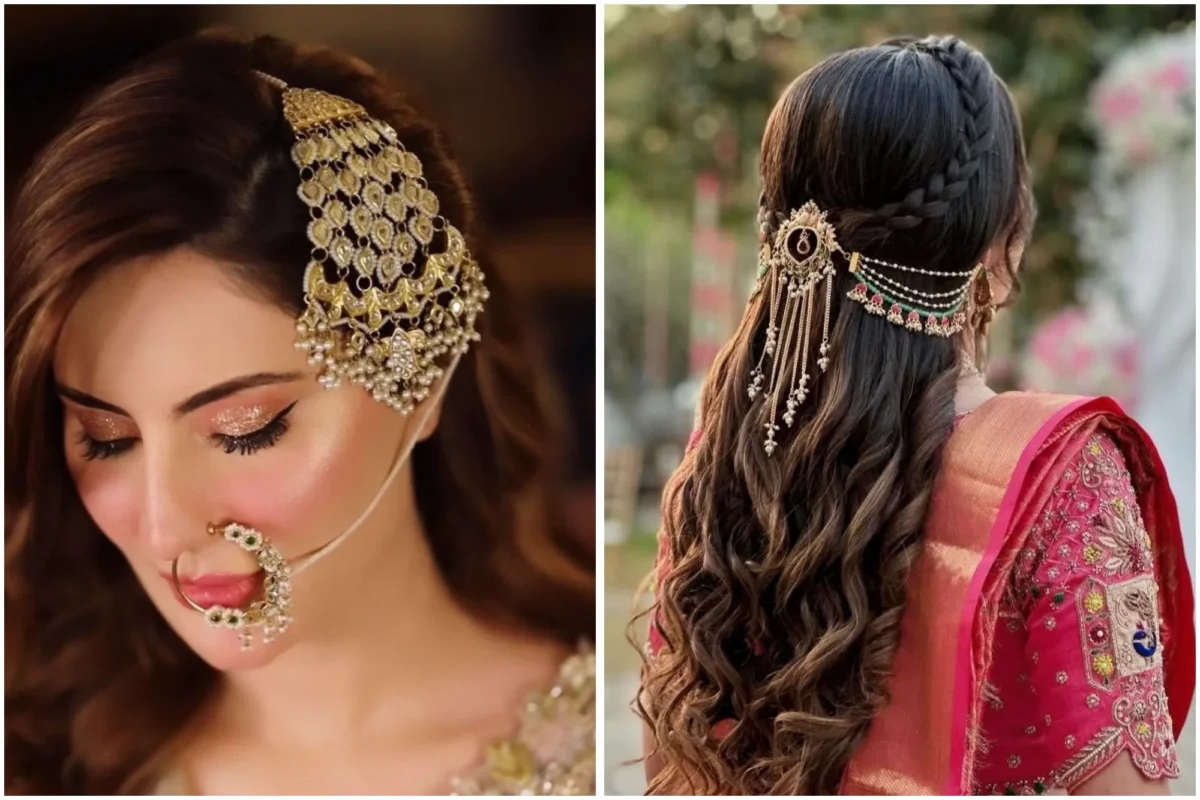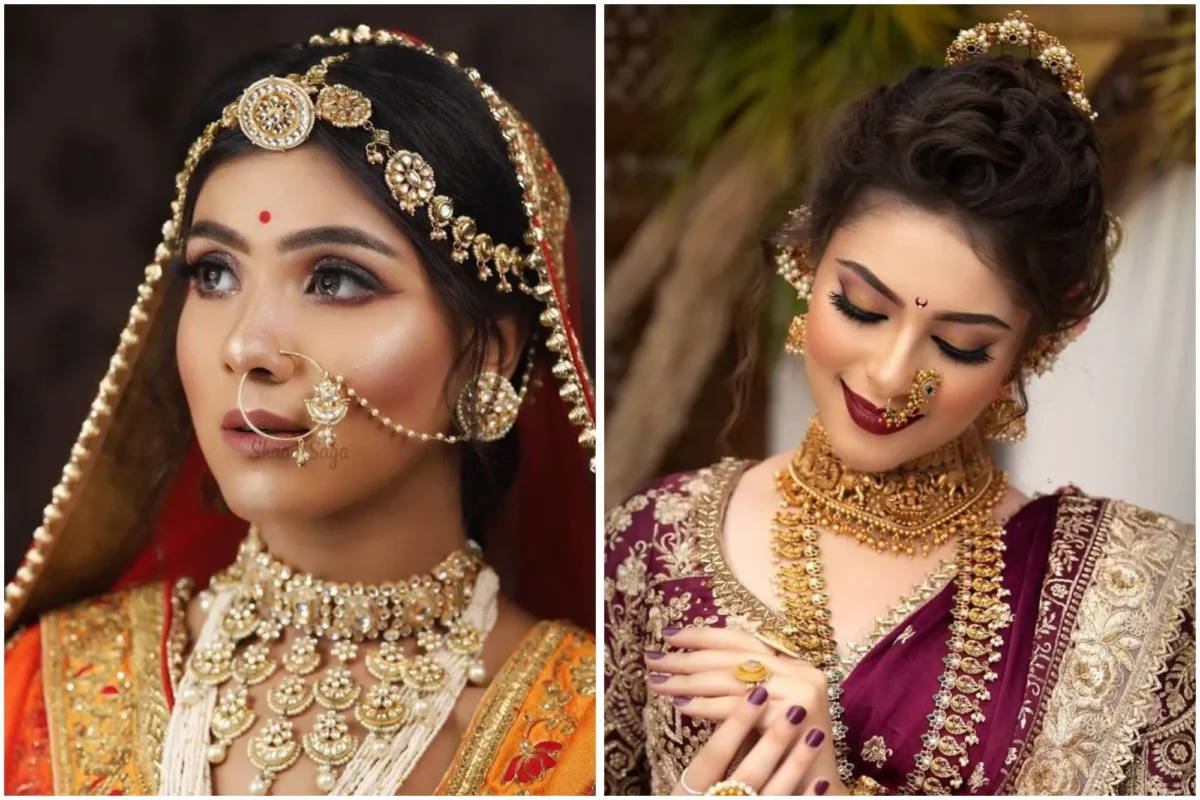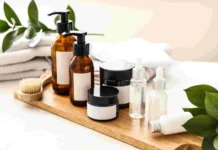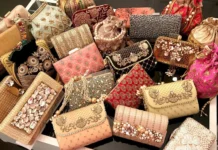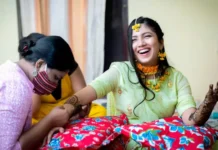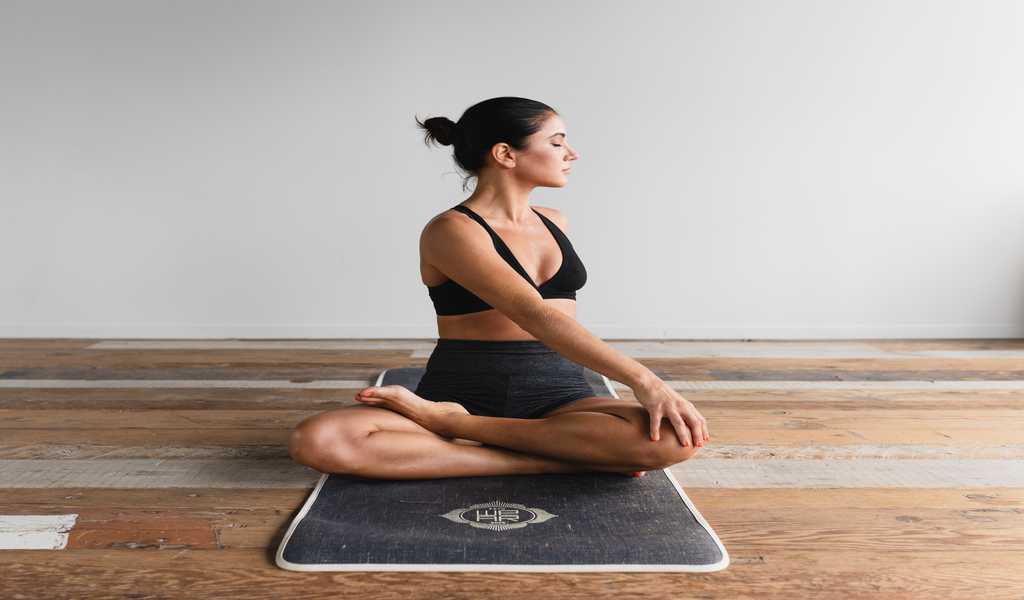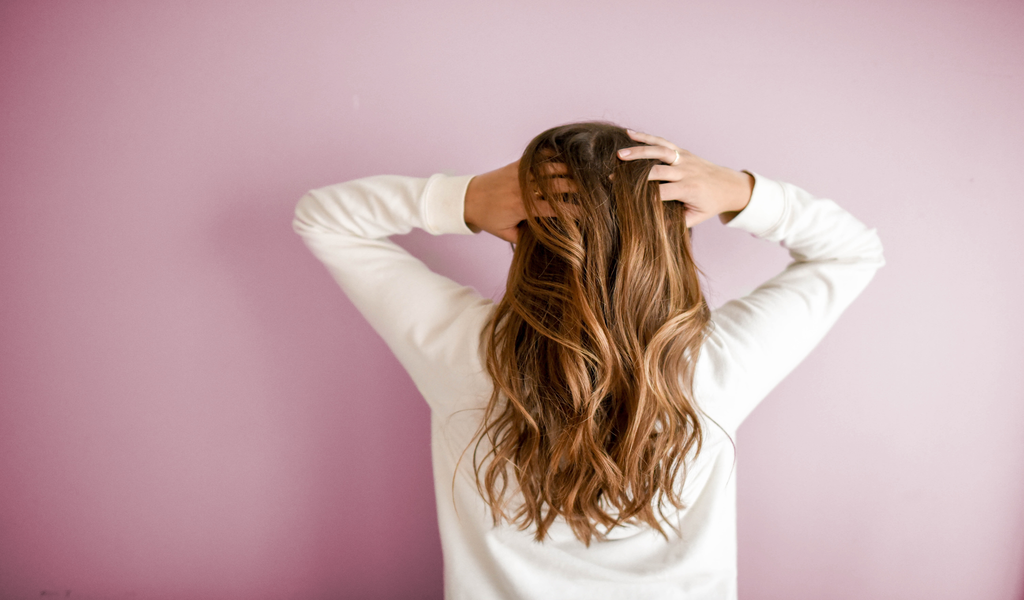This wedding season, brides are adorning their hair with beautiful jewel pieces. Read below to find out how to find the perfect bridal hair jewellery for your hairstyle.
A beautifully planned hair look does more than frame your face; it anchors the dupatta, balances your jewellery and ties your entire bridal look together. The trick is to pair the right bridal hair jewellery with the right hairstyle so everything sits securely, photographs well and feels comfortable through pheras and endless hugs.
Here’s a guide on how to choose the right bridal hair jewellery for your wedding hairstyle, only by Wedding Affair.
What to Consider
Face shape & hair density: Heavy pieces, such as a full matha patti or sheeshpatti, flatter longer faces and thicker hair because they distribute weight and width across the forehead. If your hair is fine or your forehead is petite, a lighter maang tikka or borla will sit better and won’t slip.
Dupatta drape: A centre-set dupatta or double-dupatta needs smooth, low-profile jewellery so the fabric doesn’t snag. If you plan a side-pallu or partial head drape, you can comfortably wear a jhoomar/passa on the exposed side.
Outfit & jewellery language: Polki/kundan pairs beautifully with bridal lehengas, while temple gold complements Kanjeevarams. Oxidised silver or meenakari can be lovely for daytime, coastal or heritage venues.
Comfort & hold: Ask your stylist for discreet padding, a bun net, U-pins in a criss-cross and a skin-safe adhesive for the pendant base of a tikka; especially crucial for open hairstyles or humid weather.
Read Also: The Perfect Bridal Hairstyles for Different Necklines
Classic Low Bridal Bun (Juda)
If you’re wearing a centre-parted low bun, it becomes the most stable base under a head dupatta. Choose a maang tikka with or without a matha patti, depending on how ornate your neckline and earrings are. A slim matha patti with small side chains lies flatter under the dupatta than oversized motifs.
Enhance the bun with a veni/gajra (mogra or rose), kundan juda pins, or, for South Indian aesthetics, a rakodi (disc ornament) at the bun base. This look is timeless, secure, and photographs elegantly from every angle. If your blouse has a heavy back neckline, keep the bridal hair jewellery minimal so nothing competes.
High or Mid Bun for Modern Silhouettes
For receptions or lighter drapes, a mid or high bun keeps the neck elongated. Pair it with a single maang tikka or a delicate sheeshpatti (forehead band) rather than a heavy matha patti as bridal hair jewellery. At the back, a sleek hair comb or a line of pearl/stone hair chains adds interest without bulk. If your veil will sit behind the bun, ensure the comb is curved and low-profile so it doesn’t push the veil out.
Long braid: North to South Adaptations
South Indian Jada: With Kanjeevaram sarees, the traditional set includes a rakodi at the bun, a series of jada billai discs down the braid, and sometimes a serpentine jadanāgam finishing towards the end. Up front, a nethi chutti (forehead ornament)—single or three-strand—completes the look. This pairing demands a sleek, oiled base or strong smoothing products so the pieces lie symmetrically.
Punjabi Parandi: If you love a statement braid with a lehenga or suit, add a parandi (braid tassel). Choose colours or metal tips that echo your jewellery tone; it adds length, movement, and a festive finish. Keep side accessories minimal; often a light maang tikka is enough, so the braid remains the hero.
Read Also: The Right Bridal Jewellery Style for Each Event
Half-Up or Open Waves
Open hair with polished waves is romantic but less supportive for weight. A light maang tikka (flat back, short chain) or a small borla sits well if you maintain a clean centre part. For asymmetry lovers, a jhoomar/passa pairs beautifully with side-swept waves; just anchor it with hidden elastics and micro-pins above the ear, and pin the dupatta to the opposite side for balance. If you’re adding a headchain or hair vine, keep it fine so it doesn’t collapse the volume at the crown.
Regional Signatures Worth Honouring
Rajasthan/Marwar: The spherical borla (a type of rakhdi) sits slightly higher on the forehead and looks best with a centred part and sleek bun or braid. Secure the back chain into the crown with two crossed bobby pins before draping the odhni.
Maharashtra: A polished ambada (bun) decorated with an ambada pin is classic. Many brides also wear mundavalya—stringed pearls or beads tied across the forehead and temples—which pairs cleanly with a low bun and minimal additional forehead jewellery
Read Also: Regional Bridal Jewellery Styles Across India
Your bridal hair jewellery elevates your look and brings your whole wedding look together. Choose pieces that feel like you.
Subscribe to Wedding Affair for more bridal tips.

